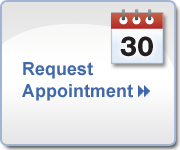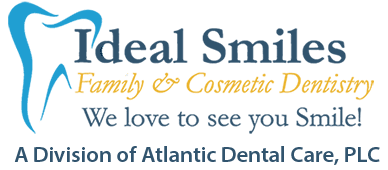Dental Home Care
Developing good dental health habits is the best way to prevent tooth decay and gum disease.
Tooth Brushing
- Get into a routine of brushing and flossing. Brush your teeth twice a day, in the morning and at night, and floss once a day.
- Use a toothbrush with soft, rounded-end bristles and a head that is small enough to reach all parts of your teeth and mouth. Replace your toothbrush every 3 to 4 months.
- You may also use an electric toothbrush that has the American Dental Association (ADA) seal of approval. Studies show that powered toothbrushes with a rotating and oscillating (back-and-forth) action are more effective than other toothbrushes, including other powered toothbrushes.
- Use a fluoride toothpaste. Some fluoride toothpastes also offer tartar control, which may help slow the formation of hard mineral buildup (tartar) on the teeth.
- Place the brush at a 45-degree angle where the teeth meet the gums. Press firmly, and gently rock the brush back and forth using small circular movements. Do not scrub. Vigorous brushing can make the gums pull away from the teeth and can scratch your tooth enamel.
- Brush all surfaces of the teeth, tongue-side and cheek-side. Pay special attention to the front teeth and all surfaces of the back teeth.
- Brush chewing surfaces with short back-and-forth strokes.
- Brush your tongue from back to front. Some people put some toothpaste or mouthwash on their toothbrush when they do this. Brushing your tongue helps remove plaque, which can cause bad breath and help bacteria grow. Some toothbrushes now have a specific brush to use for your tongue.
- Use disclosing tablets every now and then to see whether any plaque remains on the teeth. Disclosing tablets are chewable and will color any plaque left on the teeth after you brush. You can buy them at most drugstores.
How to Brush
Flossing
Floss at least once a day. The type of floss you use is not important. Choose the type and flavor that you like best. The American Dental Association recommends flossing at least once a day to achieve optimal oral health. By flossing daily, you help remove plaque from the areas between your teeth where the toothbrush can't reach. This is important because plaque that is not removed by brushing and flossing can eventually harden into calculus or tartar. Flossing also helps prevent gum disease and cavities.
If your gums bleed when you floss, the bleeding should stop as your gums become healthier and tighter next to your teeth.
Floss holders are recommended if you have difficulty using conventional floss.
How to Floss
Eat a healthy diet
- Eat a balanced diet that includes whole grains, vegetables, and fruits and is low in saturated fat and sodium. Good nutrition is vital to maintaining healthy gums and avoiding tooth decay.
- Mozzarella and other cheeses, peanuts, yogurt, milk, and sugar-free chewing gum (especially gum that contains xylitol) are good for your teeth. They help clear your mouth of harmful sugars and protect against plaque. These make great after-meal snacks.
- Avoid foods that contain a lot of sugar, especially sticky, sweet foods like taffy and raisins. The longer sugar stays in contact with your teeth, the more damage the sugar will do.
- Do not snack before bedtime, because food left on the teeth is more likely to cause cavities at night. Saliva production decreases while you sleep, so saliva does not clean the mouth well during sleeping hours.
It is also important to stop using tobacco products. Using any tobacco product makes it more likely you will have mouth cancer or gum disease (periodontal disease). Using tobacco can also delay healing after you have a tooth pulled or other surgery on your teeth or mouth. Tobacco use also causes bad breath and stains your teeth and tongue.
Use other dental aids as recommended by your dentist or dental hygienist: Interdental brushes, rubber tip stimulators, tongue cleaners, irrigation devices, fluoride, medicated rinses, etc., can all play a role in good dental home care.
CALL FOR AN APPOINTMENT NOW!


